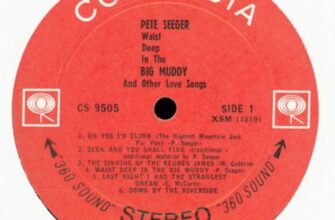Although the landscape of Television’s changed dramatically, since it first became embraced by Americans in 1947, in many ways TV hasn’t changed at all. Most viewers have no idea, why the Prime-Time schedule, kicks off in September, (the answer’s revealed below) or that the tradition’s a carry-over from radio. The question in 2015, however is if a system that originated in the early 1930’s in another medium, still works for Television today? The most frequent complaint I receive about Television’s, why do shows go on either extended, or frequent hiatuses, during the TV season. The answer’s due to maintaining the same structure that TV used during its first 20-years, of popularity, does that formula still work today?
Television first started becoming commercially viable in the United States, nearly 70-years ago and though many of that era’s shows, now seem crude and rudimentary, others developed formats still in use today. Many of the first Television stars, made the transfer over from radio, which entertained Americans, for nearly the two previous decades. Others, were former vaudevillians like Milton Berle who got dubbed “Mr. Television,” in the late forties and dominated homes on Tuesday nights. New York City reported that the water pressure would change radically, during commercials, due to the mass exodus to the bathroom.
Why does the Prime-Time schedule begin in September? Because that’s when American car manufacturers, a major advertiser on Radio and TV, introduced their new model’s for the following year. For the first few episodes of every season, the programs were loaded with automobile manufacturers, touting all the new models of their cars. Pretty much a case of the tail wagging the dog, but Radio and Television lived exclusively on advertising dollars. This was decades, before cable and satellite radio, where subscriptions, pay the bills.
The format started by radio, then carried over to TV, called for a show to run new episodes 39-weeks a year, then a Summer Series, would fill the void for the remaining 13-weeks. Audio-tape, didn’t exist during radio’s heyday, or videotape for many years in the world of television, so repeats were difficult to air. You’ve likely seen old TV shows on kinescope, a process where someone would actually use a movie camera aimed at Television screen, to send to the Western States, as we lacked the coast to coast coaxial cable setup we acquired in the sixties.
In the late sixties, the medium cut back new episodes to 26, to fill those 39-weeks, thus the repeat came into being. If you watched the show weekly, you got disappointed when repeats aired, however in the days before DVRs and VCRs, it gave viewers a chance to catch shows they missed the first time around. It also encouraged viewers to watch other shows, some of which became massive hits, after getting low-numbers earlier in the campaign.
Shows such as All In The Family, Hill Street Blues and Cheers, eventually all reached the number one spot in the Nielsen ratings, after looking like they’d get cancelled before its completion, started airing repeats. Of course the major networks, showed more patience with a show back then, especially if the series met the parameters of a quality show.
The networks altered the dynamics again, in the nineties, when they reduced their orders on episodes to just 22 per-season. Summer replacement series were no longer the norm, so more than half of the viewing year became repeat broadcasts. Cable networks, starting with HBO and Showtime, started producing Original Series, that began siphoning off a good percentage of the networks viewers. Before long, other networks, such as USA, AMC, TNT and A & E, followed suit. AMC of course produced two groundbreaking series in Breaking Bad and Mad Men and now have two new series, Halt And Catch Fire, which debuted last summer and Better Call Saul, which is currently airing.
TNT has become a prominent source of quality programming, introducing, Murder In The First, The Last Ship and Legends, last summer, all of which will return in a few months, for their second series. Our cousins from “Across The Pond,” have established BBCA, which includes the legendary series Doctor Who and one of my favorite series, The Musketeers, now in its second season.
To counter the competition, the networks introduced these “hiatus-periods,” for many of their series, sometimes replaced by limited run series, or a series of specials. We now commonly hear references to the fall season, or the winter season, in network promotions, terms that suddenly appeared out of nowhere a few years ago.
So now we’ve come full circle and face the question at the beginning of this article, does the system still work in 2015 and if not, then what can be done to improve things? With all the competition, from cable networks and new sources such as Netflix, Hulu-Plus and Amazon, is the system that the networks still hold into, now outmoded?
Many of the reasons behind the system still in use, are no longer relevant. During the days of radio shows and the first couple of decades of Television, Sponsors could host a TV show, leading to titles such as the Texaco Star Theater, Starring Milton Berle and the Kraft Music Hall. That changed due to a ruling in the late sixties and led to the variety of commercials we currently see. Secondly, there’s no longer the big kickoff to the model year for cars, so there really isn’t any reason, why the TV Campaign kicks off in September. With MLB playoffs and the World Series, the start of the NFL season and election coverage, once every four years, is September still the best time to start the season?
If we divide our 52-week year by four, we come up with the number 13. Would having four 13-week seasons of series, be preferable over the system now in place? After all how many series, can truly come up with 22 superior episodes, especially after the show’s been around the block for a while? For a series in its first couple of campaigns, the creative people are bursting at the seams with creativity, but as season ten of Supernatural attests to, it’s really rough creating 22 great episodes ten-years into a series. What if Supernatural only had 13-episodes this season and got supplemented by a spinoff series, concentrating on reoccurring character Charlie Bradbury, called The Adventures Of Charlie? Could something like that work for networks and viewers alike?
An idea that I’ve advocated for years, borrowing another concept from the British, limited run series, designed to tell an entire story in a ten-episode cycle, so the whole story’s completed in the show runner’s heads’ before they even hire a cast member. It’s actually recycling a concept from American TV in the seventies, when networks got hooked on miniseries. Some of those shows are now looked upon as some of the finest products in the history of the medium, unfortunately like most concepts in TV, it got overused and some very mediocre series, sullied the waters.
Perhaps by cutting back on older shows to 13-episode seasons, and making limited run series a part of their annual scheduling, the networks then could up the orders to new series, such as Forever, Gotham, Scorpion and other new series to a 26-week schedule to help eliminate those annoying breaks in the schedule.







